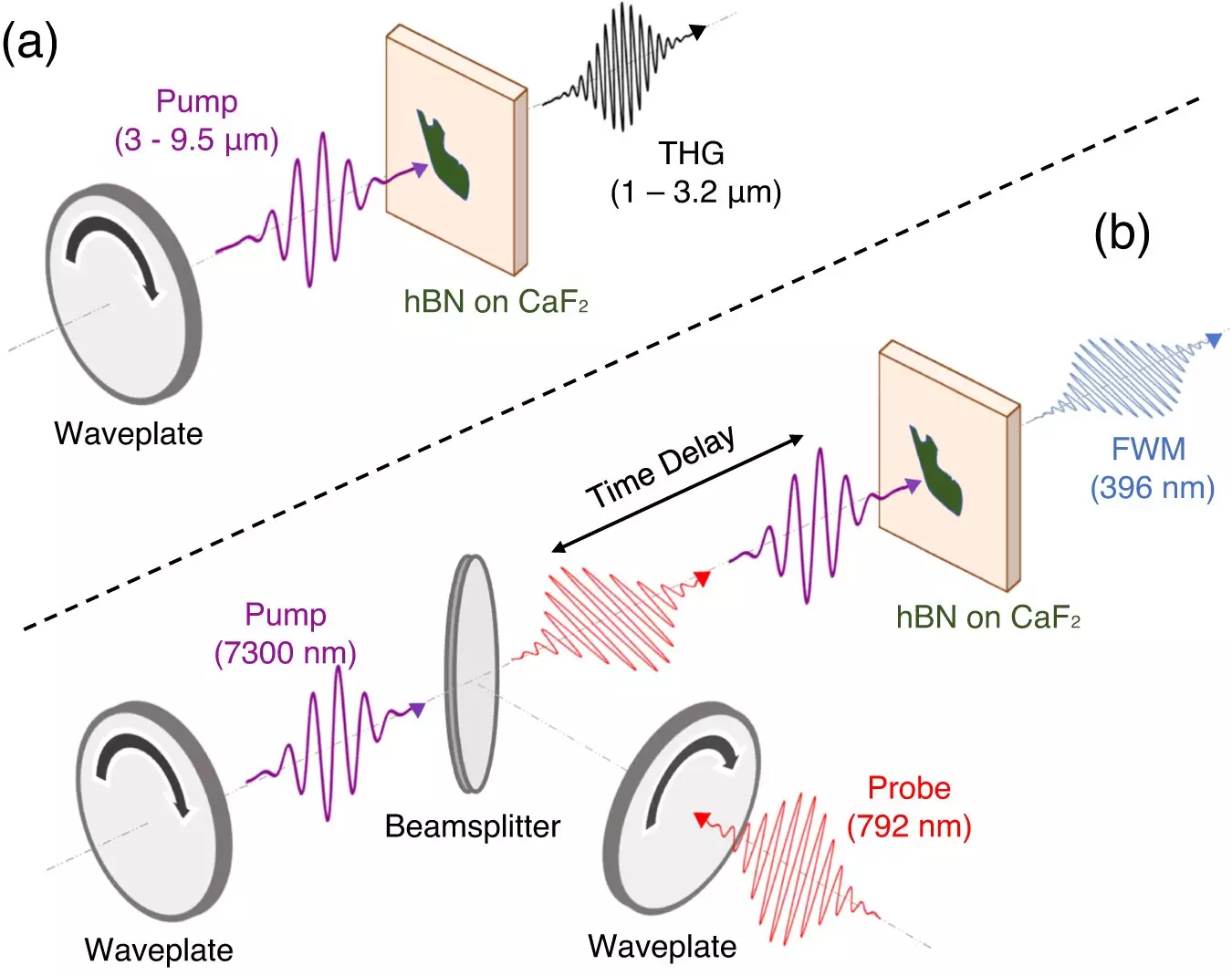In a recent study published in the journal Nature Communications, engineers at Columbia University and theoretical collaborators at the Max Planck for the Structure and Dynamics of Matter have made a significant breakthrough in the field of nonlinear optics. By pairing laser light to crystal lattice vibrations, they have successfully enhanced the nonlinear optical properties of a layered 2D material. This research opens up new possibilities for manipulating light and generating new optical frequencies. Let’s dive deeper into the details of this groundbreaking study.
The researchers chose to work with hexagonal boron nitride (hBN), a 2D material that shares similarities with graphene. hBN consists of atoms arranged in a honeycomb-shaped repeating pattern and can be peeled into thin layers with unique quantum properties. Unlike graphene, hBN is stable at room temperature, making it an ideal candidate for experimental investigations.
Atomic vibrations, known as phonons, occur in all materials as long as the temperature is above absolute zero. These vibrations can be quantized into quasiparticles called phonons, which have specific resonances. The research team focused on the optical phonon mode vibrating at 41 THz in hBN, corresponding to a wavelength of 7.3 μm in the mid-infrared region of the electromagnetic spectrum. While mid-IR wavelengths are considered high energy, in the context of crystal vibrations, they are considered low energy.
The researchers utilized a laser system tuned to hBN’s frequency of 7.3 μm to coherently drive the phonons and electrons of the crystal. By doing so, they were able to efficiently generate new optical frequencies from the medium, a critical goal in nonlinear optics. Through their experiments, they observed a significant increase in the generation of even harmonics of an optical signal, as well as a more than 30-fold increase in third-harmonic generation compared to previous studies that did not involve exciting the phonons.
To gain deeper insights into their experimental results, the research team worked closely with Professor Angel Rubio’s group at Max Planck. The theoretical collaborators provided valuable guidance and explanations for the observed phenomena. By combining experimental and theoretical approaches, the researchers were able to better understand the underlying mechanisms and potential applications of their findings.
Building upon the success of this study, the team is eager to explore further possibilities. They plan to investigate how they can modify hBN and other similar materials using light. The ability to manipulate and control the nonlinear optical properties of materials opens up new avenues for applications in various fields, including communications, imaging, and quantum technologies. The researchers are excited about the prospects of their findings and the potential impact they can have on the scientific community and beyond.
The groundbreaking research conducted by engineers at Columbia University and their theoretical collaborators at the Max Planck Institute highlights the power of pairing laser light with crystal lattice vibrations. Through their experiments with hBN, the team demonstrated the enhanced nonlinear optical properties achieved by driving the phonons and electrons simultaneously. By generating new optical frequencies and observing significant increases in harmonic generation, this study paves the way for advancements in nonlinear optics and the manipulation of light. The collaboration between experimental and theoretical scientists played a crucial role in understanding and interpreting the results. With future research focused on modifying materials using light, the potential applications of this work are vast and promising.


Leave a Reply